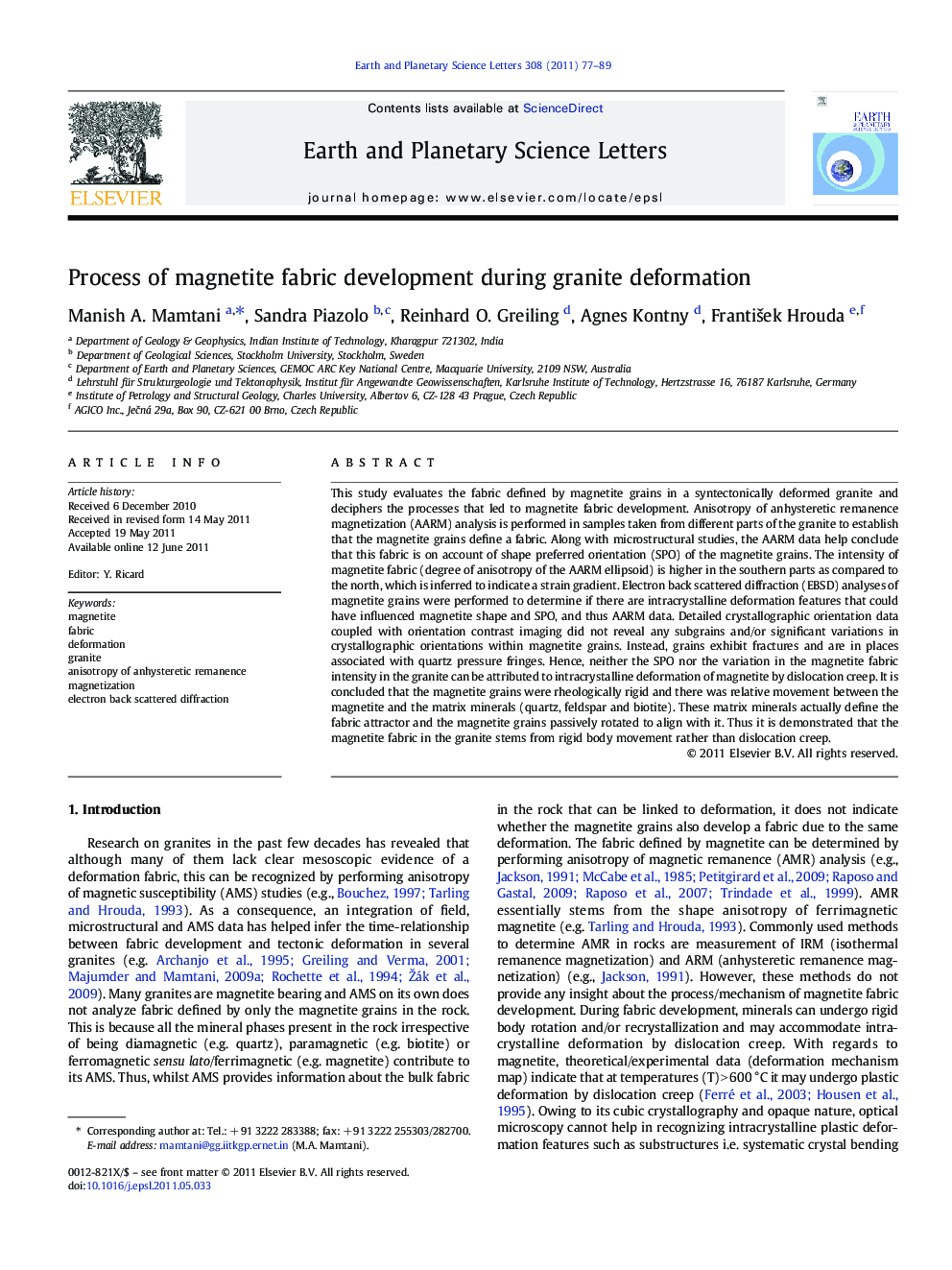| Article ID | Journal | Published Year | Pages | File Type |
|---|---|---|---|---|
| 4678035 | Earth and Planetary Science Letters | 2011 | 13 Pages |
This study evaluates the fabric defined by magnetite grains in a syntectonically deformed granite and deciphers the processes that led to magnetite fabric development. Anisotropy of anhysteretic remanence magnetization (AARM) analysis is performed in samples taken from different parts of the granite to establish that the magnetite grains define a fabric. Along with microstructural studies, the AARM data help conclude that this fabric is on account of shape preferred orientation (SPO) of the magnetite grains. The intensity of magnetite fabric (degree of anisotropy of the AARM ellipsoid) is higher in the southern parts as compared to the north, which is inferred to indicate a strain gradient. Electron back scattered diffraction (EBSD) analyses of magnetite grains were performed to determine if there are intracrystalline deformation features that could have influenced magnetite shape and SPO, and thus AARM data. Detailed crystallographic orientation data coupled with orientation contrast imaging did not reveal any subgrains and/or significant variations in crystallographic orientations within magnetite grains. Instead, grains exhibit fractures and are in places associated with quartz pressure fringes. Hence, neither the SPO nor the variation in the magnetite fabric intensity in the granite can be attributed to intracrystalline deformation of magnetite by dislocation creep. It is concluded that the magnetite grains were rheologically rigid and there was relative movement between the magnetite and the matrix minerals (quartz, feldspar and biotite). These matrix minerals actually define the fabric attractor and the magnetite grains passively rotated to align with it. Thus it is demonstrated that the magnetite fabric in the granite stems from rigid body movement rather than dislocation creep.
Research highlights► AARM and magnetite SEM-EBSD data from a syntectonic granite are presented. ► Magnetite fabric is stronger in southern part of the granite due to more strain. ► Magnetite shows brittle cracks and did not undergo intracrystalline deformation. ► Magnetite grains tended to align parallel to the matrix minerals. ► Rigid body movement with rotation was the main magnetite fabric forming process.
